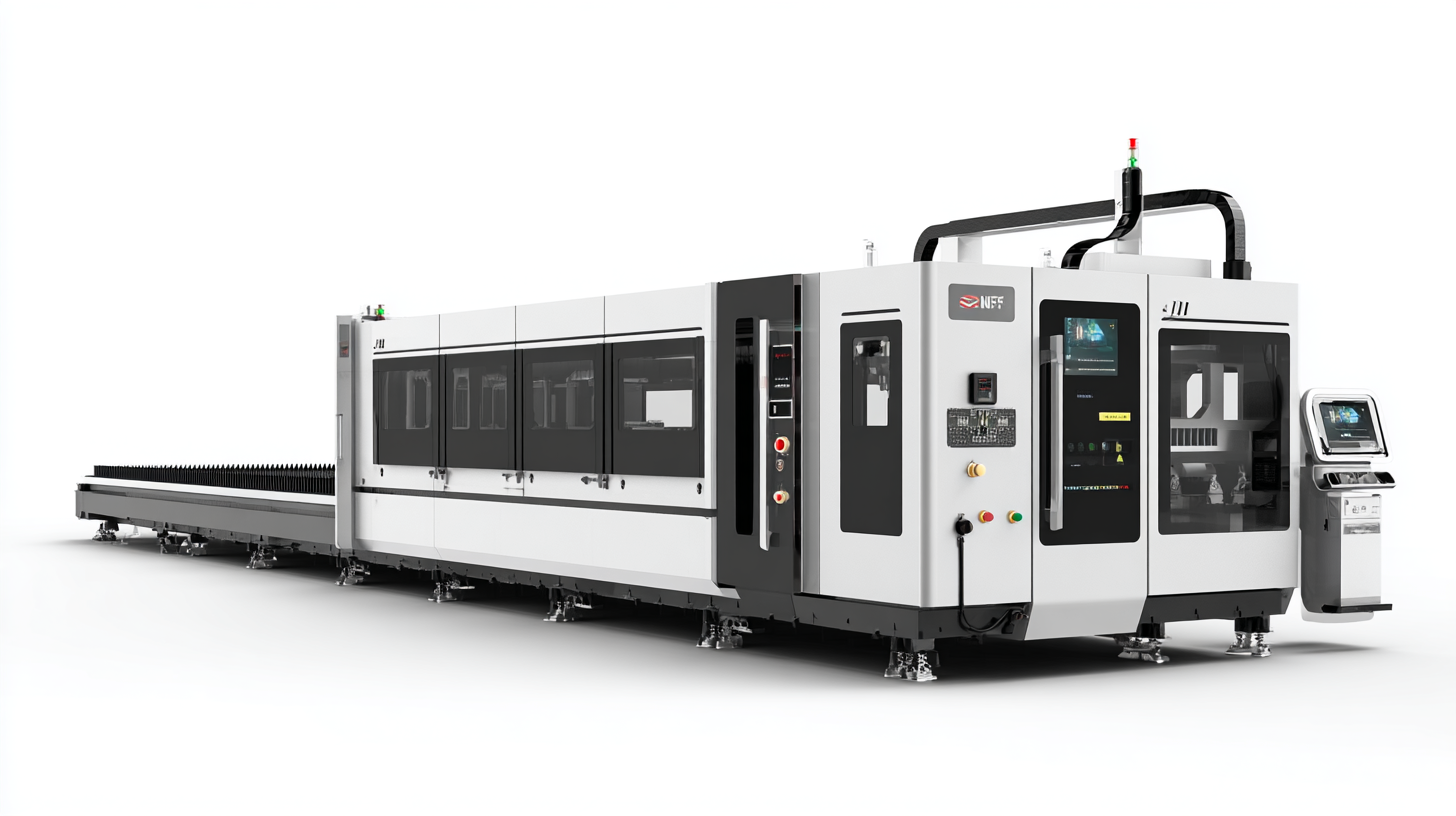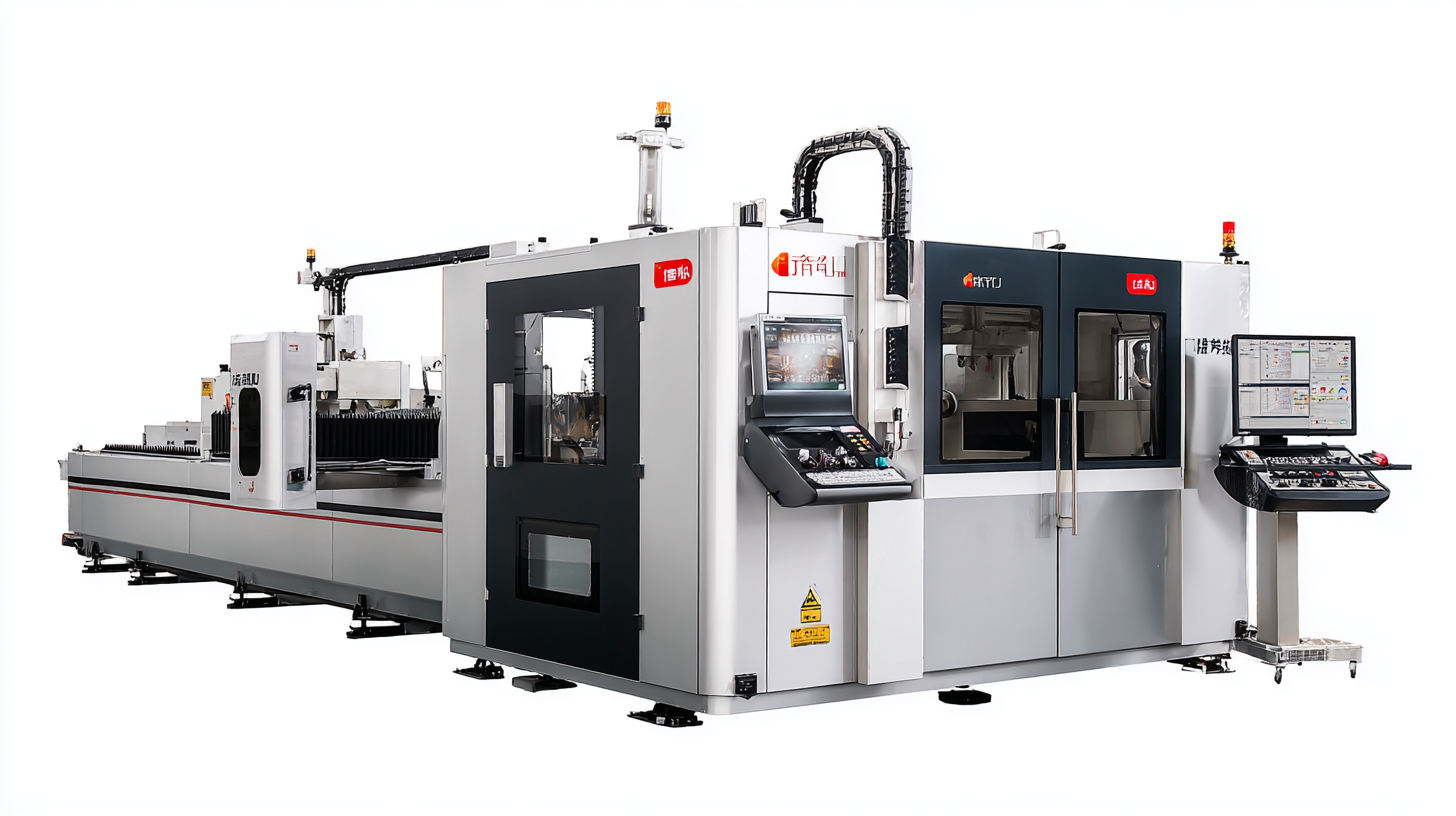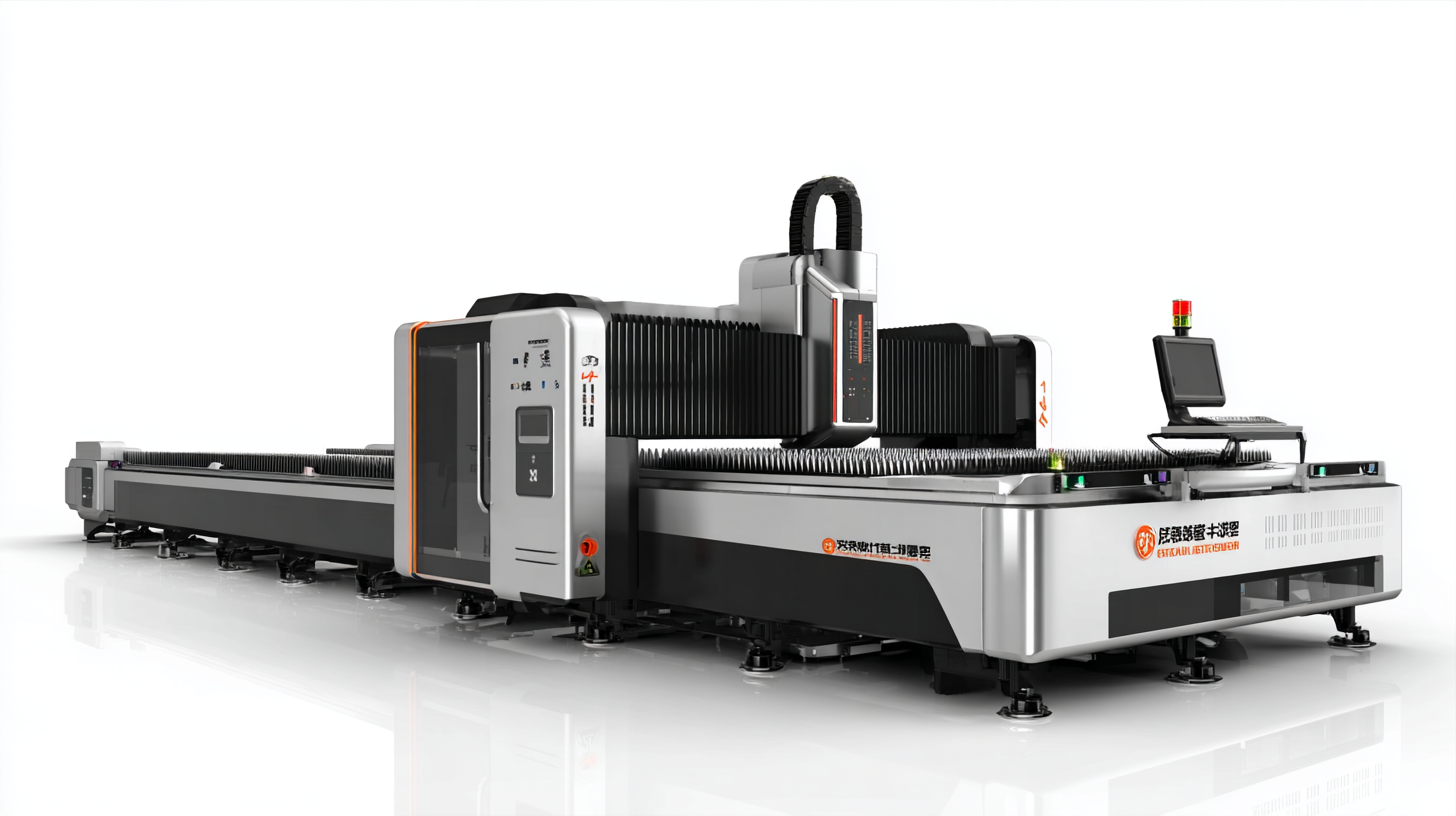© 2025 Messer Cutting Systems, Inc.
In recent years, the adoption of advanced manufacturing technologies has reshaped the landscape of industrial processes, and among these innovations, the Fiber Laser Cutting Machine stands out for its precision, efficiency, and versatility. As we look ahead to 2025, emerging technological trends are set to further enhance the capabilities of these machines, making them indispensable tools for various industries worldwide.

This blog will explore the key developments in fiber laser cutting technology, shedding light on the improvements in speed, energy efficiency, and cutting quality that are anticipated in the coming years. Additionally, we will provide practical insights on how businesses can leverage these advancements to optimize their operations and stay competitive in a rapidly evolving market.
Join us as we delve into the future of fiber laser cutting machinery made in China, which has gained global recognition for its reliability and innovation.
The global market for fiber laser cutting technology is on a remarkable upward trajectory, with the Global Laser Cutting Machines Market valued at $5.7 billion in 2023 and projected to reach an impressive $13.3 billion by 2032. This surge demonstrates a robust compound annual growth rate (CAGR) of 9.9%, emphasizing the increasing adoption of advanced laser solutions across various manufacturing sectors. As industries continually seek to enhance efficiency and precision, the integration of fiber laser cutting machines is becoming a crucial component in modern production lines.
Furthermore, the global laser welding market is also reflecting significant growth, estimated to expand from $2.03 billion in 2022 to $2.79 billion by 2029. Such statistics underscore the rising demand for laser technology, driven by its ability to deliver high-quality cuts and welds with minimal waste, making it a preferred choice for manufacturers. The evolving landscape of laser processing will likely see continued breakthroughs as automation and artificial intelligence further transform these processes, highlighting the critical role of cutting-edge technology in shaping the future of manufacturing.
 When it comes to fiber laser cutting machines, several key features distinguish high-quality models that are made in China for global use. Firstly, a robust cutting head is essential. This component must be designed to withstand high-energy outputs while maintaining precision across varied materials. Advanced designs in the cutting head also facilitate rapid adjustments, enabling operators to achieve optimal performance for both thick and thin materials, tailoring the process to their specific needs.
When it comes to fiber laser cutting machines, several key features distinguish high-quality models that are made in China for global use. Firstly, a robust cutting head is essential. This component must be designed to withstand high-energy outputs while maintaining precision across varied materials. Advanced designs in the cutting head also facilitate rapid adjustments, enabling operators to achieve optimal performance for both thick and thin materials, tailoring the process to their specific needs.
Another crucial feature is the machine's motion system. High-quality fiber laser cutting machines utilize advanced motion control technology, such as linear motors or high-speed servo drives. These systems ensure rapid acceleration and deceleration, resulting in faster cutting speeds and reduced cycle times. Additionally, the integration of smart software enhances user experience, offering intuitive controls and real-time feedback. This combination of precision engineering and intelligent software creates a system that maximizes productivity while maintaining exceptional cutting quality, making these machines a reliable choice for manufacturers worldwide.
When comparing fiber laser cutting machines to traditional cutting methods, the differences in efficiency and precision become clear.
Fiber lasers, for example, offer cutting speeds that can exceed 60 meters per minute, significantly faster than plasma cutting methods, which typically operate at around 20 meters per minute. According to a report by Technavio, the global fiber laser cutting machine market is expected to grow by over 4% annually, illustrating the increasing trust in fiber technology among manufacturers worldwide.
In terms of precision, fiber lasers can achieve cutting tolerances as tight as ±0.01 mm, making them ideal for intricate designs and thin materials. Traditional methods, like oxy-fuel cutting, often do not reach such levels of accuracy, with tolerances around ±0.5 mm. This precision not only enhances the final product's quality but also reduces material waste, an important factor in today's manufacturing industry aiming for sustainability.
Tip: When choosing a cutting machine, consider the type of materials you frequently work with. Fiber lasers excel at cutting metals with high reflectivity, like copper and brass, while traditional methods might struggle.
Tip: Regular maintenance of your fiber laser can enhance its performance and longevity. Cleaning optics and checking alignment can prevent costly downtime and ensure consistent precision in every cut.
 Fiber laser cutting machines are transforming multiple industries with their precision and efficiency. In manufacturing, these advanced machines are revolutionizing operations by enabling intricate cuts and designs that were once time-consuming or impossible with traditional methods. The automotive sector, for instance, benefits from fiber laser technology by achieving high-speed cutting of metals, leading to faster production cycles and enhanced design capabilities. As a result, manufacturers can create more lightweight and fuel-efficient vehicles while also reducing waste.
Fiber laser cutting machines are transforming multiple industries with their precision and efficiency. In manufacturing, these advanced machines are revolutionizing operations by enabling intricate cuts and designs that were once time-consuming or impossible with traditional methods. The automotive sector, for instance, benefits from fiber laser technology by achieving high-speed cutting of metals, leading to faster production cycles and enhanced design capabilities. As a result, manufacturers can create more lightweight and fuel-efficient vehicles while also reducing waste.
In the aerospace industry, the need for precision is paramount, and fiber laser cutting machines meet this requirement by delivering clean, accurate cuts on complex materials. The ability to tailor machine settings for specific materials allows companies to innovate quickly and maintain compliance with stringent regulations. Beyond these sectors, the versatility of fiber laser technology extends to the medical field, where it is used to create intricate components for devices and instruments, streamlining the process of producing high-quality products that meet exacting standards. As industries continue to leverage these machines, the potential for innovation and efficiency will only expand, setting new benchmarks in production capabilities.
When selecting the right fiber laser cutting machine, businesses must consider several critical factors to ensure they choose a model that meets their specific needs. First and foremost, the machine's cutting thickness and materials it can process are paramount. Depending on whether a business is focused on metals, plastics, or composites, the correct specifications are crucial for achieving optimal results. Companies should assess their operational requirements thoroughly, taking into account the maximum material thickness they will need to cut and the types of materials they commonly use.
Another key consideration is the machine's overall performance and efficiency. Factors such as cutting speed, power consumption, and maintenance needs can significantly impact productivity and operational costs. Businesses should evaluate the technology behind the fiber laser system, as advancements in this area can lead to improved cutting precision and reduced waste. Additionally, potential users should also look into the availability of technical support and after-sales service from manufacturers, especially when opting for machines from overseas. Reliability and support can make a substantial difference in minimizing downtime and ensuring a smooth production process.
© 2025 Messer Cutting Systems, Inc.